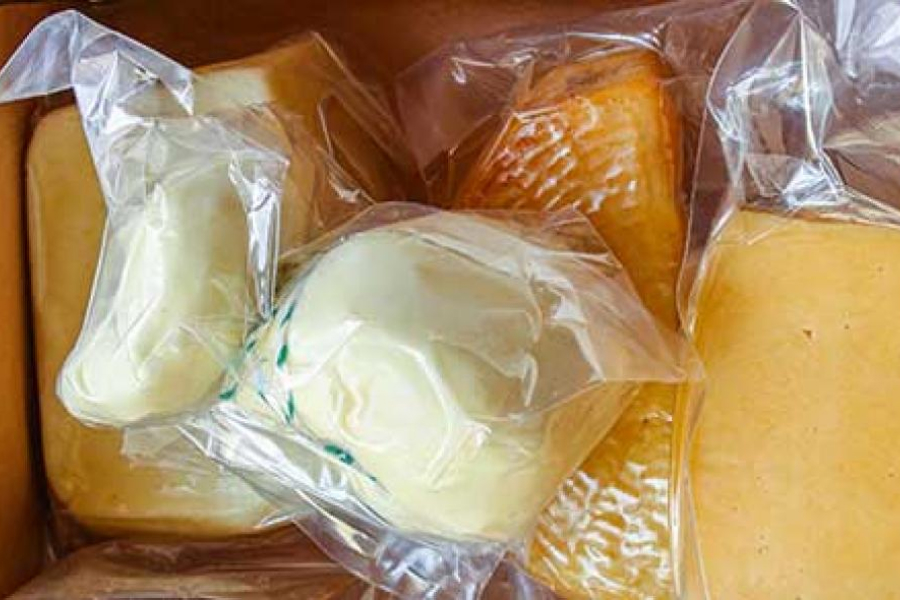
Is It Time to Reengineer Your Food Packaging?
Packaging is a significant portion of a food processor’s annual spending. Even so, given the demands of day-to-day operations, working capital pressures, and lack of in-house packaging expertise, it can be difficult for food processors to be sure their package is optimized for their application.
“When selecting packaging, opting for a stock solution, or the product with the lowest price could be an expensive decision. Food packaging should work for the food processor’s product, customers, and their business,” says Matt O’Brien, Vice President of Sales, at SupplyOne Atlanta.
Because food processors typically don’t have the in-house technical, engineering, or design expertise to choose the best packaging, product cost often drives the packaging decision. This approach means the food packaging may not provide the optimal shelf life for a product, be the ideal size, be made of the right materials for the application, or be the best choice for the packaging process.
This can lead to costly results including over-packaging, packaging line inefficiencies, damage, contamination, leakers, loss of shelf life, less shelf impact, safety issues, and negative consumer perception and satisfaction.
If your primary packaging isn’t optimal, redesign and reengineering can improve your entire packaging supply chain, bringing new efficiencies to the packaging operation.
FOOD PACKAGE ENGINEERING AND DESIGN
A food packaging engineer identifies packaging ideally suited to the food and the business. To determine the right type of contact film or packaging requirements, a packaging engineer works with the processor to learn about:
- The food being packaged. Is it frozen or fresh, prepared or not, raw or cooked?
- The type of equipment used to package the product.
- How the package will be sealed?
- How the product is used or prepared for use. Will the product be cooked in the package? Is it ready to eat?
- Packaging printing requirements. What is the best type of printing for this package – rotogravure, flexographic, or digital? Will the print require lamination or lacquer to protect the print quality?
- The type of barrier needed to keep the food fresh and safe.
- The product marketing objectives and customer expectations.
A food packaging engineer evaluates the current packaging for opportunities for improved efficiency, protection, customer satisfaction, and savings, by determining if the current packaging:
- Is it over or underperforming?
- Is the correct thickness (mil) and construction for the application?
- Is the right size and dimension.
- Works well with the processor’s packaging equipment.
- Sufficiently limits spoilage rates.
- Can be improved to enhance sales and case/shelf performance.
Food packaging engineers identify and address potential problem areas including:
- Oxidation
- Growth of microorganisms
- Moisture
- Temperature fluctuations
- Environmental contaminants
- Transit and handling concerns
With this information, food packaging engineers can determine what the packaging must deliver to the customer and how best to do this.
Packaging designers work with engineers to determine if the look and feel of the packaged product can be enhanced. They adapt the design, taking into account whether the package will be printed, the target market for the product, and what the processor wants to convey to their customers.
MORE THAN AN OPTIMIZED PACKAGE
The benefits of reengineering and redesign can have implications that extend well beyond the package itself. Cost savings can come from sources other than the packaging materials.
When one company came to SupplyOne to find a better price, packaging specialists identified and helped solve problems in the packaging process. The processor was experiencing sealing problems with the bags used to package their products. The bags were tearing in transit, and were too long, creating a lot of waste and scrap. These problems were creating costs in terms of waste and lost productivity.
SupplyOne engineers chose a film with better-sealing properties, machinability, and better tear resistance. They right-sized the packaging to a smaller format, eliminating the excess space surrounding the product, and improving its quality. As a result of these changes, the company was able to speed up their production line, reduce their waste, increase quality, and reduce their packaging spend.
While cost is a critical factor for packaging materials, sometimes a higher-cost material can save money by improving efficiency, throughput, safety, and shelf life.
For example, SupplyOne worked with a meat packer who used a metalized film to package ground meats. The film’s metal content forced the manufacturer to set its metal detector at a higher sensitivity level than is ideal to minimize disruption in the packaging process. This created a risk the sensor would miss contaminants in the meat. Packaging engineers identified a metalized alternative that eliminated the problem without sacrificing the look of the package. While the new film cost more – it increased production efficiency, reduced the risk of sending a contaminated and potentially harmful product out the door, and mitigated safety issues and potential damage to its brand.
Given the supply chain issues caused by COVID-19, packaging reengineering and redesign can also help food processors prevent supply chain challenges. When the pandemic shut down the production at a hot dog manufacturer’s film supplier, SupplyOne’s food packaging experts helped the processor respond to the growing demand for their product without missing a beat by redesigning the packaging with a new film.
WHY WORK WITH SUPPLYONE?
SupplyOne’s food packaging engineers and designers operate as part of the customer team. These packaging experts help food processors with limited in-house packaging expertise achieve speed to market while freeing up valuable time, resources, and savings.
With deep food and specialty packaging expertise, SupplyOne experts are adept packaging engineers who design and validate food packaging materials with the goal of helping food processors sell more and grow their business.
Are you ready to optimize your food packaging? Contact SupplyOne today.
